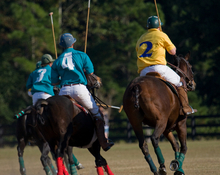Building on the success of the first Helmet Awareness Day held in the USA in 2010, Riders4Helmets expanded the event globally last year. International Helmet Awareness Day 2011 received support from 10 helmet manufacturers and over 500 equestrian retailers in the USA, Canada, Australia and the United Kingdom.

Helmet awareness day 2012
The aim of the event is to provide education to as many equestrians as possible regarding helmet safety.
The aim of the event in 2012 is to provide education to as many equestrians as possible through a global equestrian retailer network. Topics include correct helmet fit, when to replace a helmet, concussions and traumatic brain injury, and how a helmet protects your head in the event of an accident.
Each year in the United States, an estimated 7 million people ride horses. Riding as a sport has a certain amount of inherent risk due to the fact that a rider’s head when mounted in the saddle may be up to 4m or 13ft above ground level and horses are capable of moving at considerable speeds and can be unpredictable. The rate of serious injury per hour, is estimated to be approximately the same for horseback riders as of that for motorcyclists.
There appears to be little difference in the associated risk of suffering a head injury between Western and English styles of riding. The risk does however increase in the disciplines of racing and eventing. Head injuries not only occur while physically riding a horse, but can also occur while on the ground as a result of being kicked in the head, injuries that are sustained while grooming or cleaning a stall, during farrier or veterinary activities, or simply while spectating. It is estimated though that 75-80% of head injuries occur while physically mounted on a horse.
Head Injury Prevention Tips
- Wear a properly fitting certified helmet during equestrian activities.
- Always fasten the safety harness on your helmet. A helmet will NOT protect you if it comes off your head before you hit the ground.
- Do NOT wear other riders’ helmets. Your helmet is designed to fit YOUR head. An incorrectly fitting helmet offers no protection. See this link for a video on correct helmet fit.
- If you have a hard blow impact accident while wearing your helmet, IMMEDIATELY replace it for a new model. There may be damage to the helmet that is not visible to the naked eye.
- Helmet Manufacturers generally recommend replacing your helmet every 5 years or so. Helmets take a beating over time from sweat, heat, dust and rain etc. See this link for further information on when to replace your helmet.
- If you purchase your helmet online, check the date of manufacture. Purchasing a used helmet can be very risky and is NOT recommended. The helmet may have sustained previous damage not visible to the naked eye.
- A ponytail or different hairstyle can affect the fit of your helmet. When you try on helmets prior to purchase, wear your hair in the style that you expect to wear it when riding.
- Do NOT tilt up your helmet. Helmets should be worn with the visor parallel to the ground.
- Do NOT wear a helmet designed for use in other sports when riding i.e. a bike helmet. Equestrian helmets are specifically designed and tested for a fall from a horse.
- DO THE RESPONSIBLE THING “STRAP ONE ON, EVERYONE’S DOING IT”
Riders4Helmets was founded in early 2010 after Olympic dressage rider Courtney King Dye was seriously injured in a riding accident. King Dye, who remained in a coma for a month following her accident, was not wearing a helmet at the time of the accident and continues to undergo rehabilitation. The goal of the Riders4Helmets Campaign is to educate equestrians on the benefits of wearing a properly fitted and secured, certified helmet.
